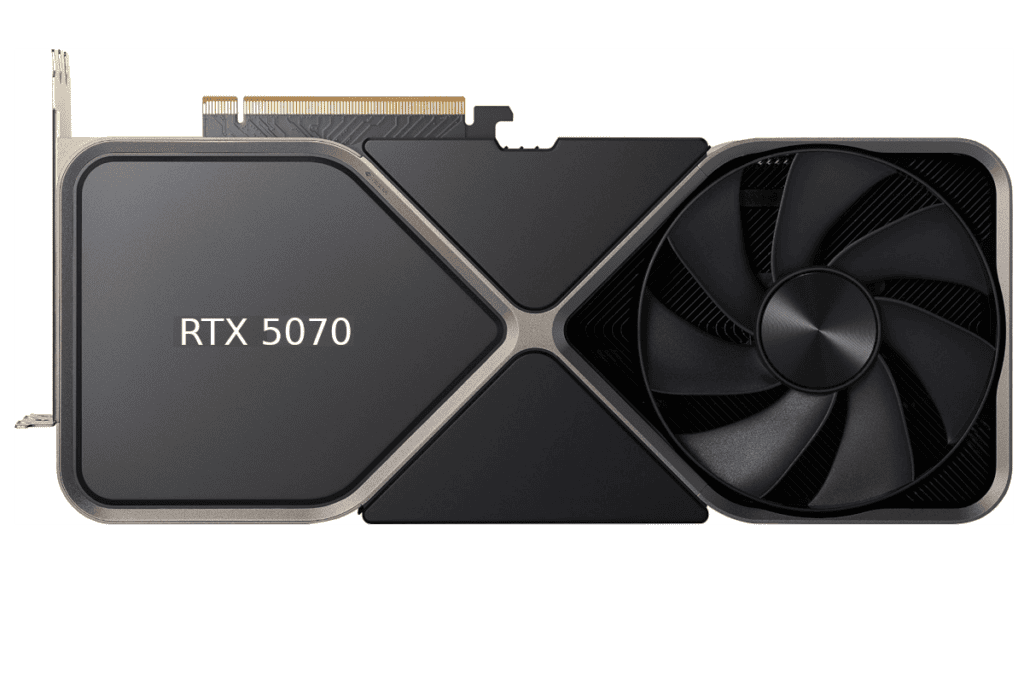Nvidia’s upcoming GeForce RTX 5000 series graphics cards are set to make a big splash in the GPU market. The new lineup, featuring the RTX 5090, 5080, and 5070 models, promises significant upgrades over their predecessors. These next-generation GPUs are built on Nvidia’s new Blackwell architecture, which aims to deliver improved performance and efficiency.
The RTX 5090 is shaping up to be a powerhouse, with a reported 32GB of video memory and an impressive 21,760 shader units. This high-end card is expected to offer a substantial leap in graphics processing capabilities. Nvidia plans to unveil these new graphics cards at CES in January 2025, with the RTX 5090 and 5080 models likely to hit store shelves that same month. The RTX 5070 is expected to follow in February, with the RTX 5060 arriving in March.
Unveiling the Future of Graphics: A Glimpse at the NVIDIA RTX 50 Series
The rumor mill is abuzz with whispers of NVIDIA’s next-generation graphics cards, the RTX 50 series. While NVIDIA remains tight-lipped, leaks and whispers suggest some exciting advancements. Let’s dive into the anticipated specs for the RTX 5090, 5080, and 5070, keeping in mind that these are still rumors and subject to change.
A New Architecture: Blackwell
The RTX 50 series is expected to be built on NVIDIA’s new “Blackwell” architecture. This successor to Ada Lovelace promises significant leaps in performance and efficiency. It’s rumored to deliver a substantial boost in ray tracing capabilities and overall graphical prowess.
RTX 5090: The Flagship
The RTX 5090 is poised to be a graphics powerhouse. Leaks suggest it could boast a staggering 18,432 CUDA cores, a boost clock of around 2.5 GHz, and a massive 24GB of GDDR7 memory. This translates to potentially double the performance of the current RTX 4090. However, this power comes at a cost, with a rumored 600W TDP.
RTX 5080: The High-End Contender

The RTX 5080 is no slouch either. Rumors point to 14,336 CUDA cores, a boost clock of around 2.6 GHz, and 20GB of GDDR7 memory. It’s expected to maintain a balance between performance and power consumption with a 450W TDP.
RTX 5070: The Mainstream Marvel
The RTX 5070 aims to bring high-end performance to the mainstream market. Leaks suggest it could feature 10,752 CUDA cores, a boost clock of around 2.8 GHz, and 16GB of GDDR7 memory, all within a 300W TDP.
Performance Expectations
While official benchmarks are yet to emerge, early rumors hint at a significant performance uplift across the RTX 50 series. The flagship 5090 is anticipated to deliver up to twice the performance of the RTX 4090, while the 5080 and 5070 are also expected to surpass their predecessors considerably.
Beyond the Specs
The RTX 50 series is rumored to bring more than just raw power. It’s expected to support DLSS 3.5, an enhanced version of NVIDIA’s AI upscaling technology, for even better image quality and performance. Further improvements in ray tracing performance are also anticipated, making games look more realistic than ever before.
Release Timeline
While NVIDIA hasn’t confirmed any release dates, whispers suggest the RTX 5090 might arrive in late 2024, followed by the 5080 and 5070 in early 2025. However, these are just estimates, and the actual release schedule could vary.
Awaiting Official Confirmation
| GPU | CUDA Cores | Boost Clock | Memory | TDP |
|---|---|---|---|---|
| RTX 5090 | 18,432 | 2.5 GHz | 24GB GDDR7 | 600W |
| RTX 5080 | 14,336 | 2.6 GHz | 20GB GDDR7 | 450W |
| RTX 5070 | 10,752 | 2.8 GHz | 16GB GDDR7 | 300W |
It’s important to emphasize that all of this information is based on leaks and speculation. Until NVIDIA officially unveils the RTX 50 series, we can’t be certain about the final specs, performance, or release dates. However, the rumors paint an exciting picture of what the future of PC gaming might hold.
Key Takeaways
- Nvidia’s RTX 5000 series GPUs offer major upgrades in memory and processing power
- The new graphics cards are set to launch at CES 2025, with staggered releases through March
- Blackwell architecture powers the next-gen GPUs, promising improved performance and efficiency
RTX 4090 vs. RTX 5090: A Look at the Next Generation
The RTX 5090 is set to be a big step up from the RTX 4090. It will have more power and better parts. Let’s look at what’s new.
The RTX 5090 will use a new chip called GB202-300-A1. This chip will have 21,760 shader units, which is a lot more than the 16,384 in the RTX 4090. It will also have 170 streaming processors, up from 128 in the 4090.
Memory is getting a big boost too. The 5090 will have 32GB of new GDDR7 memory. This is more and faster than the 24GB of GDDR6 in the 4090. The memory bus is also wider at 512 bits, compared to 448 bits in the 4090.
All this extra power means the 5090 will use more energy. It’s expected to use up to 600 watts, while the 4090 uses 450 watts. This might mean you need a bigger power supply for your computer.
We don’t know the price of the 5090 yet, but it will likely cost more than $2,000. The 4090 started at $1,599 but now sells for over $2,000.

Here’s a quick comparison:
| Feature | RTX 4090 | RTX 5090 |
|---|---|---|
| Shader Units | 16,384 | 21,760 |
| Memory | 24GB GDDR6 | 32GB GDDR7 |
| Power Use | 450W | 600W |
The RTX 5090 should be much faster than the 4090, especially for 4K gaming. It might even be able to play games at 4K with 240 frames per second. This card will be great for gamers who want the best performance and don’t mind the high price.
RTX 4080 vs RTX 5080: A Performance Comparison
The RTX 5080 is set to bring some upgrades over its predecessor, the RTX 4080. The new GPU is expected to have 10,752 shader units, up from 9,728 in the RTX 4080. This represents about a 10% increase in raw computing power.
Memory-wise, both cards are likely to feature 16GB of graphics memory. However, the RTX 5080 is rumored to use newer GDDR7 memory, which could boost performance. The memory bus width remains at 256 bits for both models.
Here’s a quick comparison of key specs:
| Feature | RTX 4080 | RTX 5080 (Rumored) |
|---|---|---|
| GPU | AD103-300-A1 | GB203-400-A1 |
| Shader Units | 9,728 | 10,752 |
| Memory | 16GB GDDR6 | 16GB GDDR7 |
| TGP | 320W | 400W |
The RTX 5080’s power draw is expected to increase to 400W, up from the RTX 4080’s 320W. This extra power might help squeeze out more performance.
While exact performance figures aren’t known yet, early estimates suggest the RTX 5080 could be 15-25% faster than the RTX 4080. This boost comes from the increased shader count, newer architecture, and faster memory.
Pricing for the RTX 5080 hasn’t been announced. The RTX 4080 launched at $1,199, so expect the new card to be in a similar range.
It’s worth noting that these specs are based on leaks and may change before release. The performance gap between the RTX 5080 and the rumored RTX 5090 seems unusually large, so take this information with caution.
RTX 4070 vs. RTX 5070: A Closer Look
The RTX 5070 brings some changes compared to its predecessor, the RTX 4070. Both cards use a 192-bit memory bus and 12GB of graphics memory. The 5070 upgrades to GDDR7 memory from GDDR6, boosting bandwidth by about 33% to 672GB/s.
Power use increases with the new model. The RTX 5070 has a 250W TGP, up from 200W on the 4070. This extra power may help drive performance gains.
The RTX 5070 is built on Nvidia’s new GB205 chip, codenamed “David Blackwell”. It likely has more shader units than the 4070’s 5,888, possibly around 6,400. The number of streaming processors may increase from 46 to 50.
Here’s a quick comparison:
| Feature | RTX 4070 | RTX 5070 |
|---|---|---|
| GPU | AD104-250-A1 | GB205 |
| Memory | 12GB GDDR6 | 12GB GDDR7 |
| Memory Bus | 192-bit | 192-bit |
| TGP | 200W | 250W |
The RTX 5070’s exact specs aren’t confirmed yet. This makes it hard to guess how much faster it will be than the 4070. The bump in shader units and memory speed should improve performance, but the gain may not be huge.
Pricing for the RTX 5070 is unknown. The 4070 launched at $599, so expect the new card to be in a similar range.
For gamers and creators, the RTX 5070 looks to offer better performance in tasks like 4K gaming and 3D rendering. The faster memory and likely increase in shader units should help in these areas.
PCIe 5.0 support on the 5070 could also improve data transfer speeds, making it more future-proof. This may matter for users who keep their cards for many years or work with very large files.







